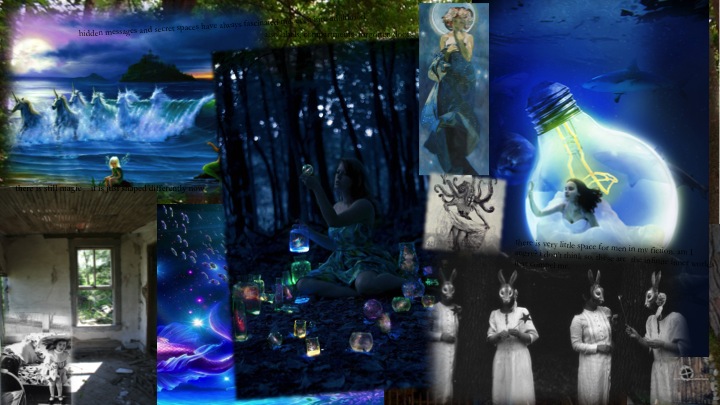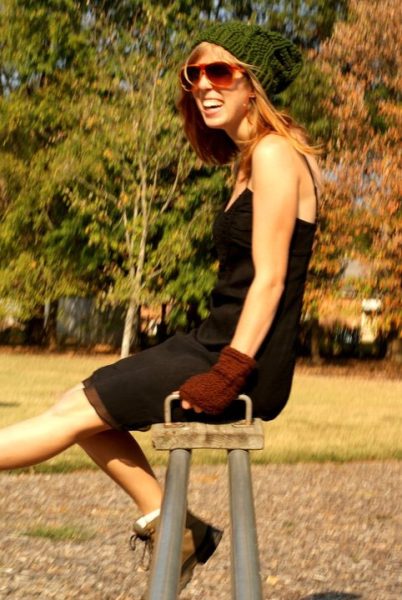Your forthcoming book, Hole in the Middle, sounds awesome! I’m really intrigued by the idea of a book about a teenage girl with an actual hole in the middle of her. I see the cover of Death Becomes Her every time I hear your title and get really excited about the idea of a teen navigating that particular issue. And I think even just reading the pitch for it embodies what I like best about your work: you are fearless in your creativity. I think for a lot of writers, myself included, writing about something that’s not realistic, it can be even easier to doubt if this is a story worth telling. What advice would you give writers who worry about not writing realism? And can you tell us more about what your process for writing this novel?
Oh, dear one—you, and anyone afraid of letting themselves write magic: let me sit you down and give you a mug of tea and let’s talk about all of your fears. When you say “Is this story worth telling?” do you mean I’m afraid no one else will take it seriously and it will never get published and I will die alone, surrounded by cats? As far as publishing goes, the great news, of course, is that we live in a fantastic time in which the literary/genre walls are coming down: we see this in the short fiction of magical literary greats like Aimee Bender and George Saunders, in up-and-comings Carmen Machado and Lesley Arimah, and in the work of wonderful literary magazines like Smokelong Quarterly, The Fairy Tale Review, Hobart, The Collagist, Granta—honestly, there are more magazines open to weird work than I could list here. Which is fantastic: weird fiction has a more diverse platform, wider audience, and more literary cachet than ever before.
If you mean, however, I’m not sure I think this story is worth telling, then think about where that’s coming from, and what not-realism is code for in your mind—weak writing? Flat characters? Clichés? These appear in all genres (of which contemporary genre very much is one). By the same token: every story, no matter how (un)real, is a human story. Peter Pan resonates with our regret over the loss of childhood. Frankenstein teaches us to reflect on our own monstrosity. The Giver and other dystopias point to weaknesses in our real society.
Realism reflects who we are; strange and magical fiction allows us to explore the same from new and more vivid angles. It’s emotional truth with the volume turned up.
As far as the novel goes: it started as a short story, which started as me lying on the floor of my bedroom after some lousy date or other and thinking, “Man, finding love would be so much harder if I had a hole through my middle.” Which was just too strange and lovely an idea to waste—I immediately sat up and wrote what became the first line of the novel: Here are the options for a girl like me.
A theme that seems to recur in your work is your interest in bodies where things are not behaving as usual: a collapsible lung, a girl on fire, detached breasts as art, a woman who becomes a tree. What are some of your favorite transformations in stories and books?
As a child, I was obsessed with Greek mythology, which I discovered through a paperback book from my fifth grade teacher’s classroom library called Gods, Demigods & Demons: An Encyclopedia of Greek Mythology. Lest the colorful title mislead you, it was literally an encyclopedia. Two hundred or so pages of no pictures, just alphabetical entries like “BAUCIS: an elderly man who, with his wife Philemon, showed great hospitality to the disguised gods Zeus and Hermes, and was transformed as a reward into an oak tree whose branches interwove with his wife’s for all eternity.” I read it so many times it basically fell apart.
Transformation is everywhere in mythology—also in religion and in children’s literature. Lot’s wife, the Little Mermaid, the Frog Prince, the Oz books. In many ways, it’s irresistible: who among us doesn’t believe that we are more fierce and beautiful than our mundane exteriors bely? You can see it in our gentle addiction to Buzzfeed quizzes—this sense that there’s some “truer” self that lies beneath. Like, I may be a mildly unhappy accountant for a plumbing supply company, but I’m actually a Gryffindor! Fiction just allows for a literalizing of the magic we all secretly—even (especially!) grown-ups—hope for.
If you had to make a collage of images that describes your work (no words, just images), what would you put in it?
This is the most fun question ever! THANK YOU for letting me geek out and put this together—I was definitely channeling High School Kendra (only she would have pasted it together and glued fake pearls and dark glitter all over it). I don’t have the rights to any of these images, by the way, except the photo of the tiny child in the lower left, which is of my mother as a young girl, and the photo in the very, very back, which is the house where I spent my childhood.

When you’re reading a story for Broad!, which elements, when done well, make you immediately want to accept a story?
I’m always attracted to a confidence and authenticity of voice—even if the subject matter isn’t something that might ordinarily grab me, a powerful voice grabs me as a reader and doesn’t let go.


 The core workshop of SmokeLong Fitness is all in writing, so you can take part from anywhere at anytime. We are excited about creating a supportive, consistent and structured environment for flash writers to work on their craft in a community. We are thrilled and proud to say that our workshop participants have won, placed, or been listed in every major flash competition. Community works.
The core workshop of SmokeLong Fitness is all in writing, so you can take part from anywhere at anytime. We are excited about creating a supportive, consistent and structured environment for flash writers to work on their craft in a community. We are thrilled and proud to say that our workshop participants have won, placed, or been listed in every major flash competition. Community works.